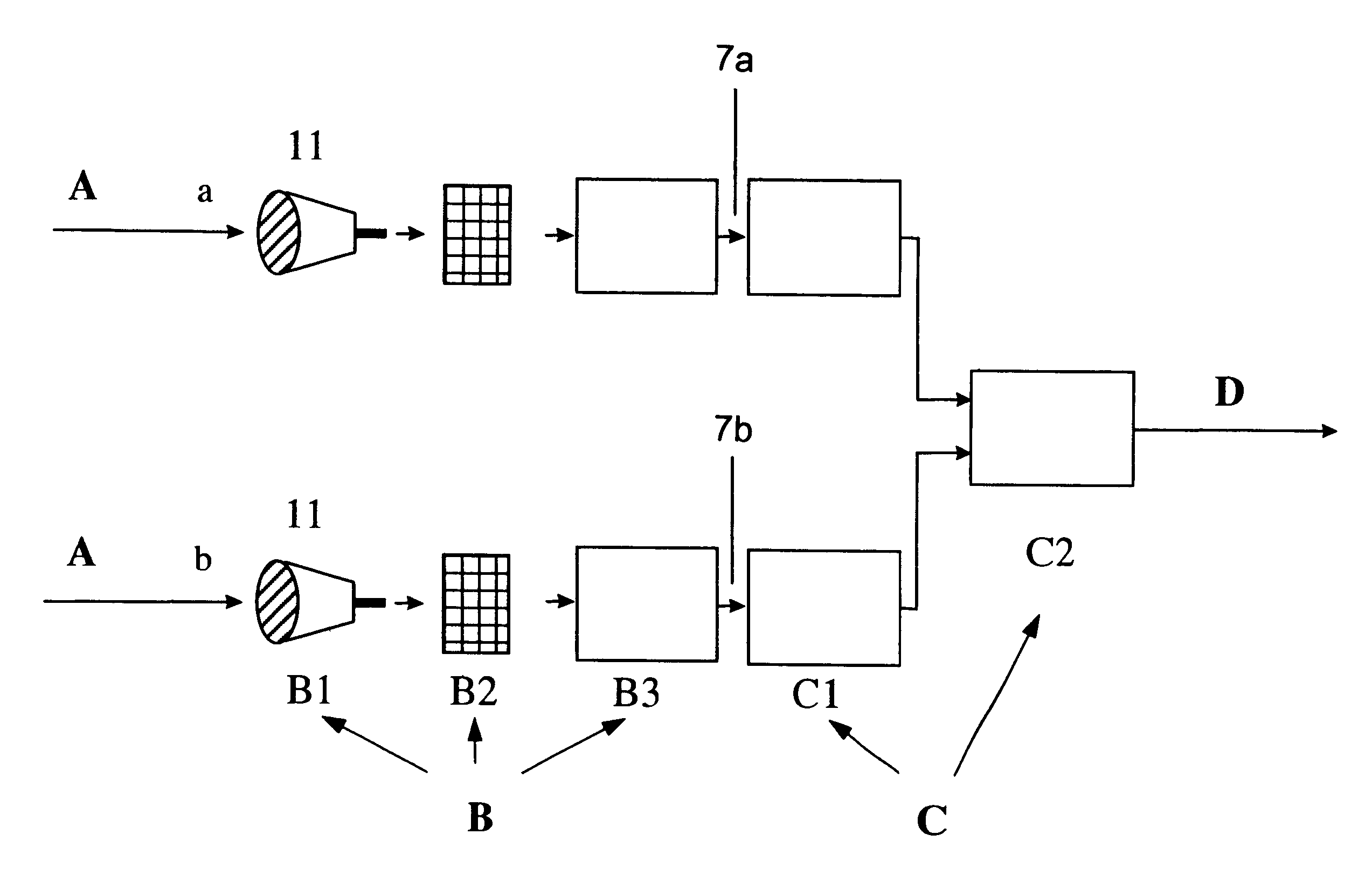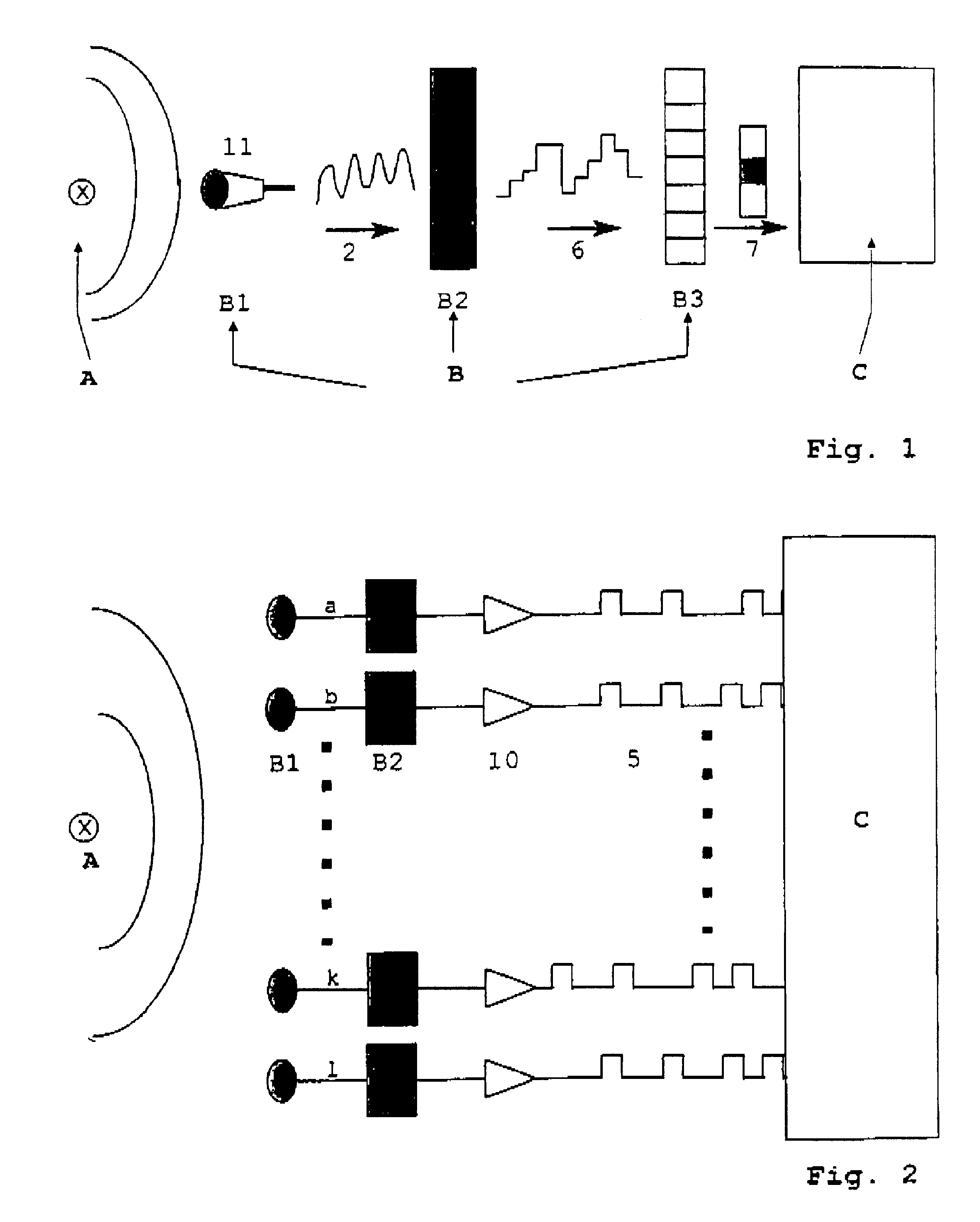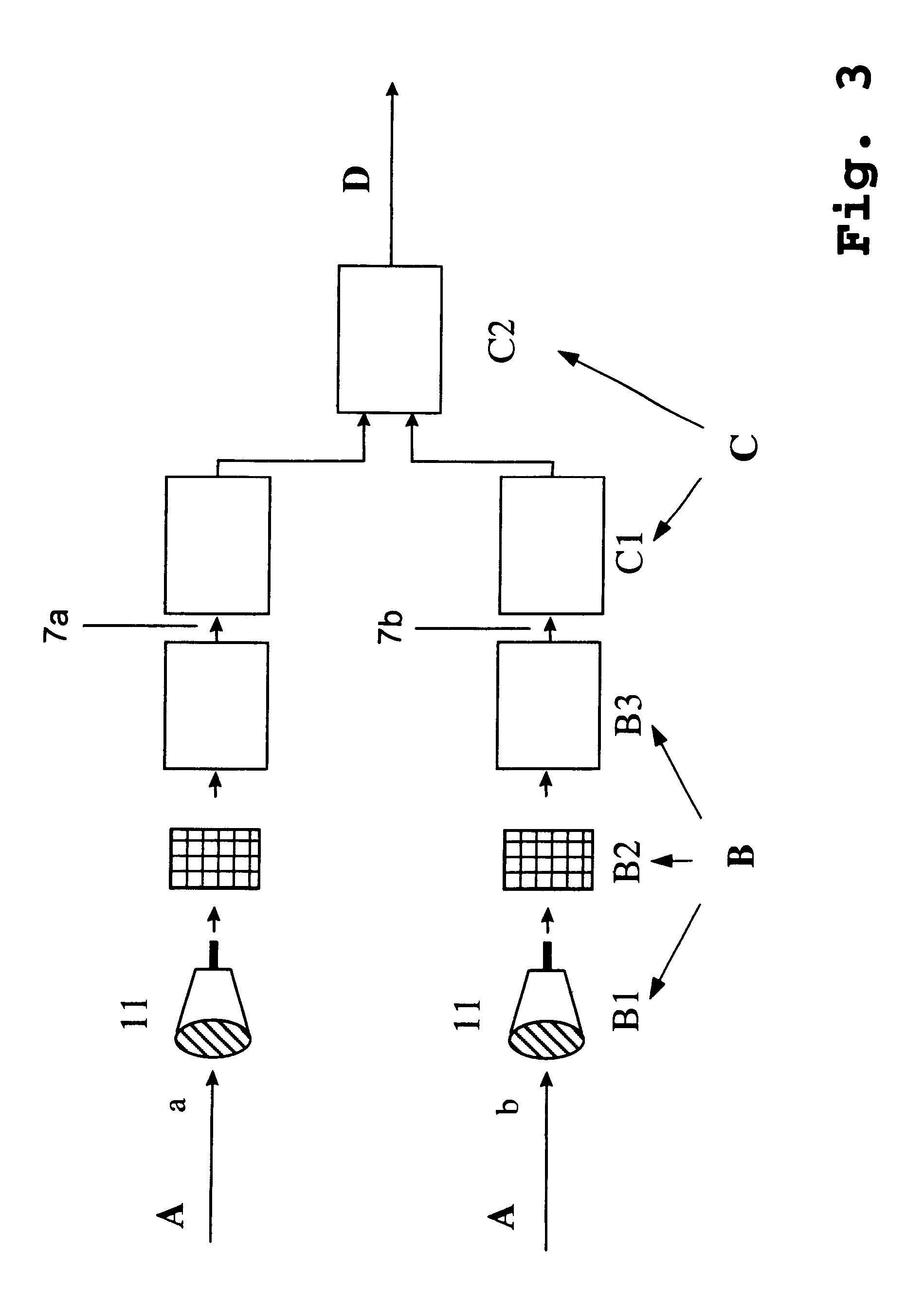Method and apparatus for determining transit-time differentials for signal waveforms for real-time pattern recognition, localization and monitoring of optical and acoustic signals
a signal waveform and transit time differential technology, applied in direction finders using ultrasonic/sonic/infrasonic waves, amplifiers, transmission, etc., can solve the drawback of multi-template matching procedures, parallel, multi-template matching procedures, and invariant translation, so as to increase the accuracy of measurement
- Summary
- Abstract
- Description
- Claims
- Application Information
AI Technical Summary
Benefits of technology
Problems solved by technology
Method used
Image
Examples
Embodiment Construction
In the method of the invention, first pattern recognition is carried out and then the determination of the transit-time differential by detecting key waveforms, and the information is processed further in a subsequent multi-coincidence unit; shift-invariant, parallel multi-template matching is carried out during which key waveforms are correlated in parallel and an output per clock step, illustratively of a set of transit-time differentials, is created in the said subsequent multi-coincidence unit.
The method to segment-wise determine pattern recognition and transit-time differentials of signal waveforms which can be converted into monotone and continuous space-time trajectories, in particular for purposes of real-time pattern recognition, is characterized in that pre-programmed key signals are detected by signal sampling and processing the sampled data, further by subjecting to multiple coincidences combined signal pairs of different signal transit times and different waveforms. At ...
PUM
| Property | Measurement | Unit |
|---|---|---|
| transit-time | aaaaa | aaaaa |
| speed | aaaaa | aaaaa |
| programmable threshold value | aaaaa | aaaaa |
Abstract
Description
Claims
Application Information
 Login to View More
Login to View More - R&D
- Intellectual Property
- Life Sciences
- Materials
- Tech Scout
- Unparalleled Data Quality
- Higher Quality Content
- 60% Fewer Hallucinations
Browse by: Latest US Patents, China's latest patents, Technical Efficacy Thesaurus, Application Domain, Technology Topic, Popular Technical Reports.
© 2025 PatSnap. All rights reserved.Legal|Privacy policy|Modern Slavery Act Transparency Statement|Sitemap|About US| Contact US: help@patsnap.com



